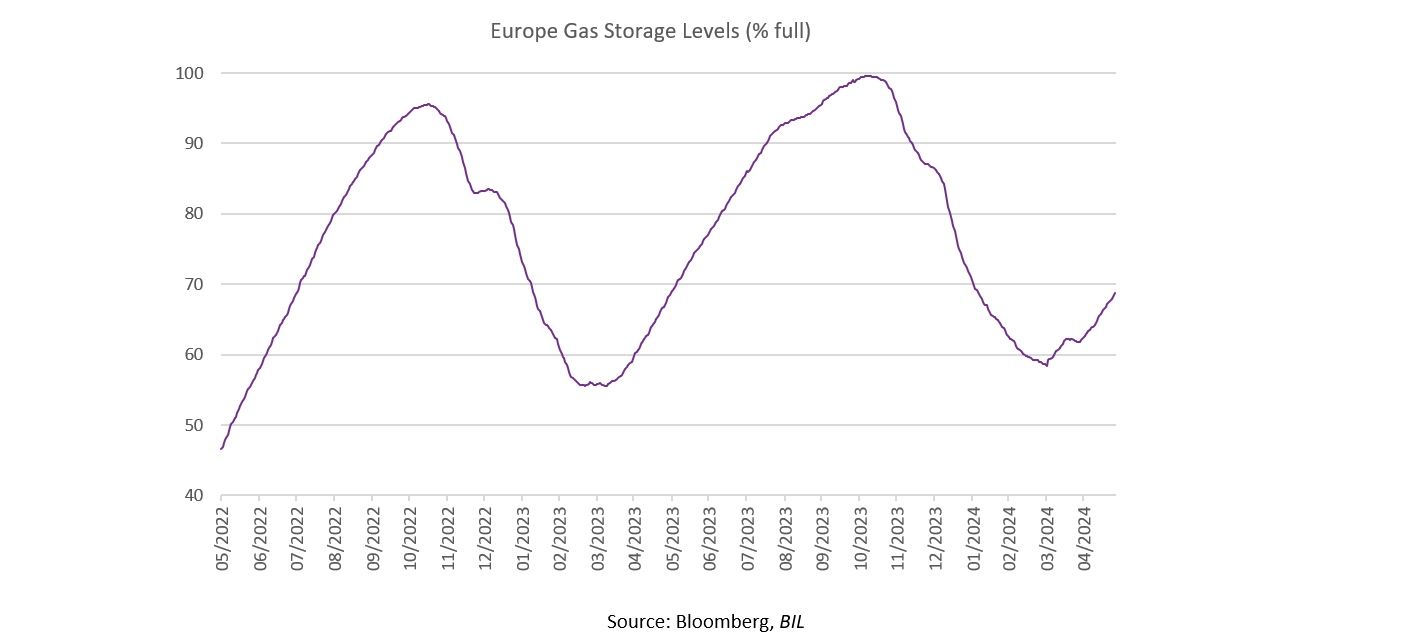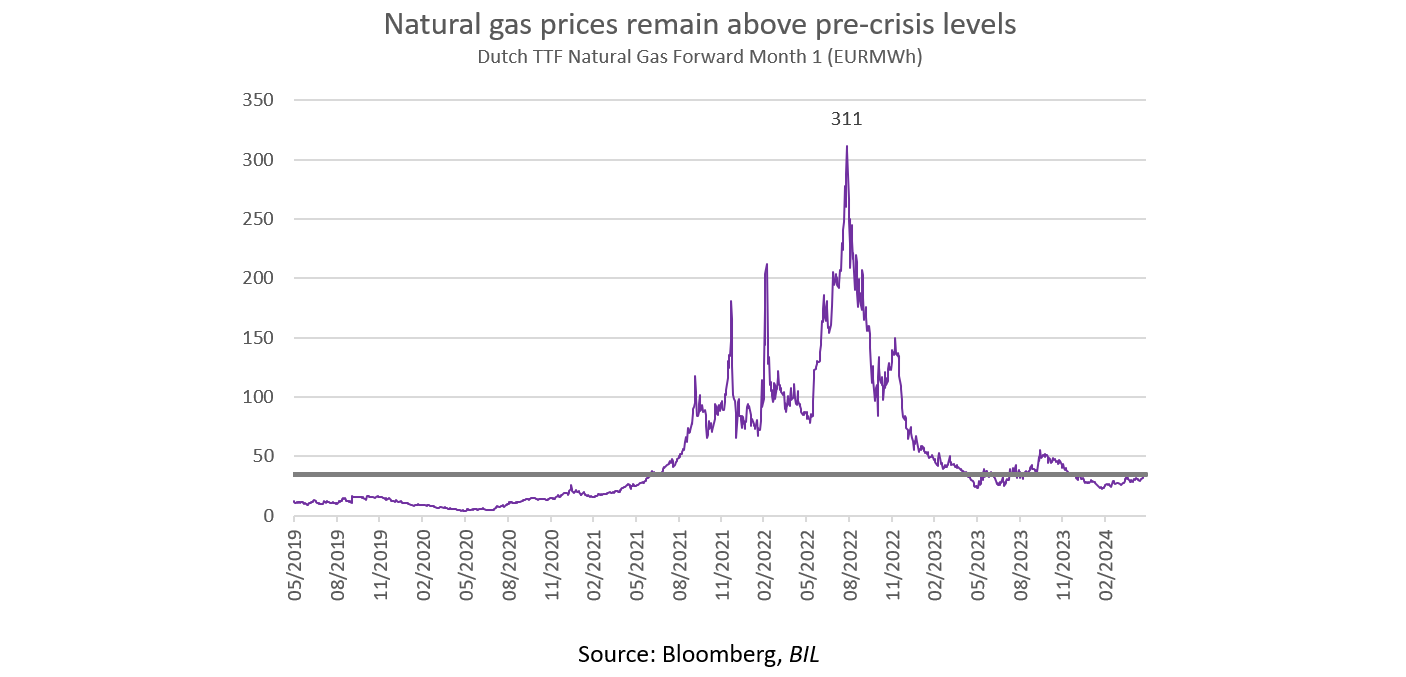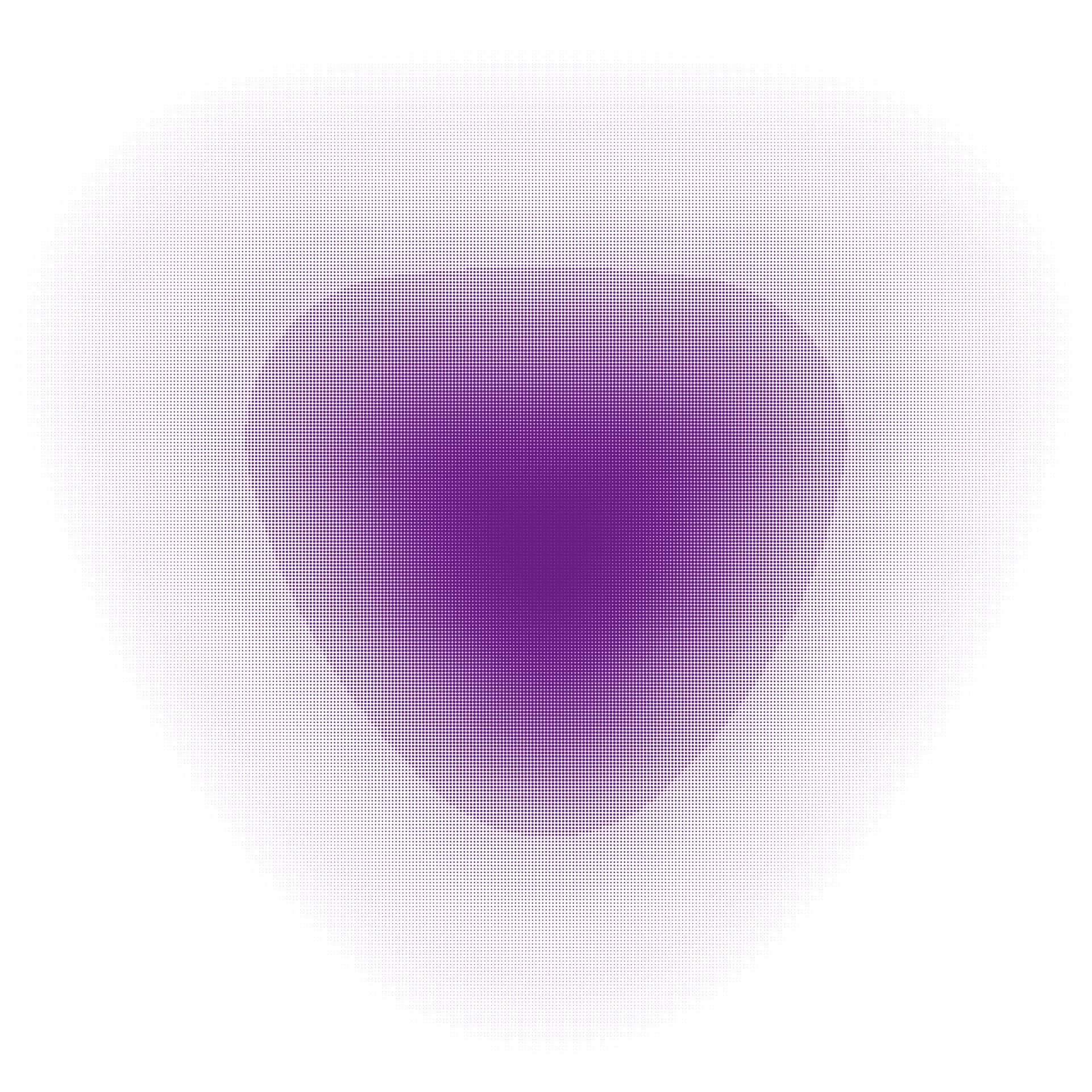Prior to the invasion of Ukraine in February 2022, the lion’s share of Europe’s energy imports came from Russia. It accounted for 28% of the continent’s total crude oil imports, while Russian pipelines delivered 44% of all imported gas. The outbreak of war and the subsequent sanctions therefore resulted in a huge supply shortfall and a global market shock that sent prices skyward. In the aftermath, wholesale gas prices rose tenfold, while crude rose above 120 USD/bbl.
Fast forward to today, there are clear signs that Europe’s energy crunch is easing. For example, just two years on, the continent has emerged from winter 2023-24 with gas storage at record-high levels (59% full), while wholesale prices have come down substantially. Current dynamics suggest the EU will meet its target to fill facilities to 90% well ahead of the November deadline. Despite ongoing geopolitical tensions, the price of crude has also eased, and currently trades at around 80 USD/bbl.

Various factors have led to the amelioration of Europe’s energy situation.
The first might be considered luck: exceptionally mild weather.
At least when it comes to gas, the second factor is a fall in demand. Last year, European countries consumed 20% less natural gas relative to the average recorded across 2019-2021.[1] Industrial demand has been particularly depressed and has not yet shown signs of recovering, despite a decline in wholesale gas prices. Household demand is more volatile; it is very seasonal with gyrations in demand driven by temperatures.
The third key factor is reactivity on the part of policymakers to secure alternative energy sources.
In the past, European countries mainly relied on piped gas to satisfy their needs and absorbed excess supply from the global liquefied natural gas (LNG) market when the price was right. Today, Europe has joined the likes of China and Japan to become a major LNG importer, with its imports surging by almost 60% YoY in 2022 alone. This has involved significant investments to expand regasification infrastructure which will allow the EU to further tap the LNG market in the future. Germany, which had no LNG terminal until late- 2022, has outlined plans to build several such facilities.
In terms of the origins of that gas, the US has emerged as Europe’s primary supplier. While total US LNG exports expanded by just 10% in 2022 due to supply constraints, flows towards Europe more than doubled (+140%).
Looking at oil, the decrease of crude imports from Russia was compensated by increased imports from traditional partners like Saudi Arabia, the US and Norway, as well as less traditional suppliers like Brazil and Angola.
Nuclear has also played a role in filling the supply gap. In 2023, France (Europe’s biggest nuclear power operator with 56 reactors), became a net exporter of electricity. This summer, its first new reactor in 25 years is scheduled to be connected to the grid in Normandy, and the country plans to build at least six new reactors in the late 2030s (though a skills shortage is a potential obstacle to these ambitions).
In the short-term, these factors combined have helped Europe avert the worst-case scenario of a severe energy shortage leading to extreme measures like rationing.
Fragilities remain
However, looking at the bigger picture, Europe’s energy situation is far from comfortable. It must now rely on global energy markets which are vulnerable to supply shocks, or even perceived threats of them.
Perhaps the most obvious threat today is the fraught geopolitical landscape.
Due to attacks in the Arabian Peninsula, for several months, tankers carrying fuel products between the Atlantic and Pacific basins have had to take a costly detour around the horn of Africa. This is leading to a fragmented global marketplace whereby traders are pairing shipments with destinations that are geographically close (e.g., US imports are being directed towards Europe and Middle Eastern exports towards Asia). These efforts will likely intensify when fuel demand mounts ahead of winter, when shipping costs usually also rise. Such fragmentation will make it more difficult to divert supply between regions if there is an outage at an export plant, a sudden surge in demand, or an unforeseen event (like the recent drought in the Panama Canal).
Also worth noting is the fact that European wholesale gas prices are still almost double their pre-crisis levels, which is tangibly impacting the competitiveness of Europe’s energy-intensive industries. Ironically, the recent softening we have seen in energy prices is due to muted demand stemming partly from the energy crisis itself. A rebound of the European economy, particularly industrial powerhouses like Germany, could therefore reinforce a feedback loop.

Lastly, an uptick in Chinese activity would signal the return of a significant LNG market buyer, again potentially pressuring prices upwards and highlighting Europe’s dependence on more expensive sources.
A coordinated approach
Insofar as now, Europe’s band-aid fixes to the energy crisis have proven highly effective, but the ultimate cure - reducing the level and volatility of energy prices in European wholesale markets - could be years in the making. That solution will be multi-faceted and will require coordinated policies, with the EU leaning on its strength as an economic bloc. One part of it might entail pooling demand and then getting involved in the commercial negotiations to strike long-term deals that offer suppliers a predictable revenue stream while ensuring gas security and affordability to European countries. Another part will clearly have to focus on increasing domestic supply, most likely through accelerated investment in alternatives.
[1] https://www.bruegel.org/dataset/european-natural-gas-demand-tracker#:~:text=Compared%20to%20the%20average%20across,the%20Baltic%20states%20and%20Finland.
Disclaimer
All financial data and/or economic information released by this Publication (the “Publication”); (the “Data” or the “Financial data
and/or economic information”), are provided for information purposes only,
without warranty of any kind, including without limitation the warranties of merchantability, fitness for a particular
purpose or warranties and non-infringement of any patent, intellectual property or proprietary rights of any party, and
are not intended for trading purposes. Banque Internationale à Luxembourg SA (the “Bank”) does not guarantee expressly or
impliedly, the sequence, accuracy, adequacy, legality, completeness, reliability, usefulness or timeless of any Data.
All Financial data and/or economic information provided may be delayed or may contain errors or be incomplete.
This disclaimer applies to both isolated and aggregate uses of the Data. All Data is provided on an “as is” basis. None of
the Financial data and/or economic information contained on this Publication constitutes a solicitation, offer, opinion, or
recommendation, a guarantee of results, nor a solicitation by the Bank of an offer to buy or sell any security, products and
services mentioned into it or to make investments. Moreover, none of the Financial data and/or economic information contained on
this Publication provides legal, tax accounting, financial or investment advice or services regarding the profitability or
suitability of any security or investment. This Publication has not been prepared with the aim to take an investor’s particular investment objectives,
financial position or needs into account. It is up to the investor himself to consider whether the Data contained herein this
Publication is appropriate to his needs, financial position and objectives or to seek professional independent advice before making
an investment decision based upon the Data. No investment decision whatsoever may result from solely reading this document. In order
to read and understand the Financial data and/or economic information included in this document, you will need to have knowledge and
experience of financial markets. If this is not the case, please contact your relationship manager. This Publication is prepared by
the Bank and is based on data available to the public and upon information from sources believed to be reliable and accurate, taken from
stock exchanges and third parties. The Bank, including its parent,- subsidiary or affiliate entities, agents, directors, officers,
employees, representatives or suppliers, shall not, directly or indirectly, be liable, in any way, for any: inaccuracies or errors
in or omissions from the Financial data and/or economic information, including but not limited to financial data regardless of the
cause of such or for any investment decision made, action taken, or action not taken of whatever nature in reliance upon any Data
provided herein, nor for any loss or damage, direct or indirect, special or consequential, arising from any use of this Publication
or of its content. This Publication is only valid at the moment of its editing, unless otherwise specified. All Financial data and/or
economic information contained herein can also quickly become out-of- date. All Data is subject to change without notice and may not be
incorporated in any new version of this Publication. The Bank has no obligation to update this Publication upon the availability of new data,
the occurrence of new events and/or other evolutions. Before making an investment decision, the investor must read carefully the terms and
conditions of the documentation relating to the specific products or services. Past performance is no guarantee of future performance.
Products or services described in this Publication may not be available in all countries and may be subject to restrictions in some persons
or in some countries. No part of this Publication may be reproduced, distributed, modified, linked to or used for any public or commercial
purpose without the prior written consent of the Bank. In any case, all Financial data and/or economic information provided on this Publication
are not intended for use by, or distribution to, any person or entity in any jurisdiction or country where such use or distribution would be
contrary to law and/or regulation. If you have obtained this Publication from a source other than the Bank website, be aware that electronic
documentation can be altered subsequent to original distribution.
As economic conditions are subject to change, the information and opinions presented in this outlook are current only as of the date
indicated in the matrix or the publication date. This publication is based on data available to the public and upon information that is
considered as reliable. Even if particular attention has been paid to its content, no guarantee, warranty or representation is given to the
accuracy or completeness thereof. Banque Internationale à Luxembourg cannot be held liable or responsible with respect to the information
expressed herein. This document has been prepared only for information purposes and does not constitute an offer or invitation to make investments.
It is up to investors themselves to consider whether the information contained herein is appropriate to their needs and objectives or to seek advice
before making an investment decision based upon this information. Banque Internationale à Luxembourg accepts no liability whatsoever for any investment
decisions of whatever nature by the user of this publication, which are in any way based on this publication, nor for any loss or damage arising
from any use of this publication or its content. This publication, prepared by Banque Internationale à Luxembourg (BIL), may not be copied or
duplicated in any form whatsoever or redistributed without the prior written consent of BIL 69, route d’Esch ı L-2953 Luxembourg ı
RCS Luxembourg B-6307 ı Tel. +352 4590 6699 ı www.bil.com.
Read more
More
December 19, 2025
Weekly Investment Insights
Written on 19 December, The Weekly Investment Insights newsletter will be paused over the holiday period, returning on January 9. Thank you for your readership....
December 15, 2025
Weekly InsightsWeekly Investment Insights
US stock markets celebrated the Federal Reserve’s interest rate decision last week, with several major indices touching all-time highs. However, on Friday, the S&P 500...
December 8, 2025
Weekly InsightsWeekly Investment Insights
Major US stock indices ended last week in the green, with investors betting that the US Federal Reserve will give markets an early Christmas present...
December 1, 2025
Weekly InsightsWeekly Investment Insights
Thanksgiving meant that last week was cut short for the US stock market, but that did not stop major indices from ending the week higher....
November 24, 2025
Weekly InsightsWeekly Investment Insights
Even though last week brought some good news from both corporate earnings reports and economic data, global stocks ended in the red as fear over...
